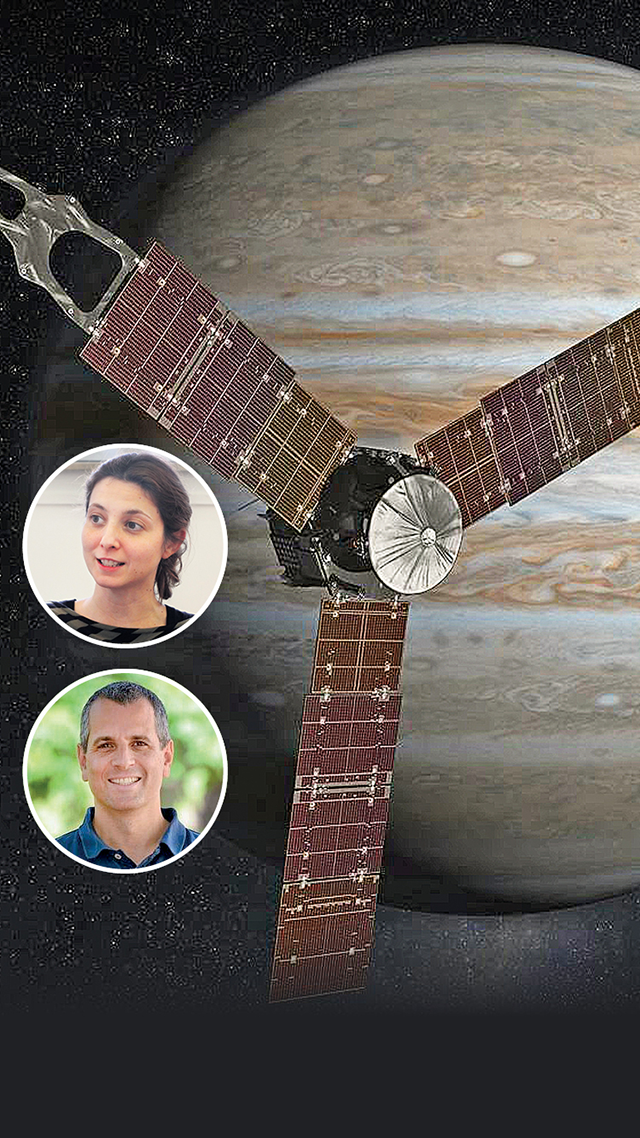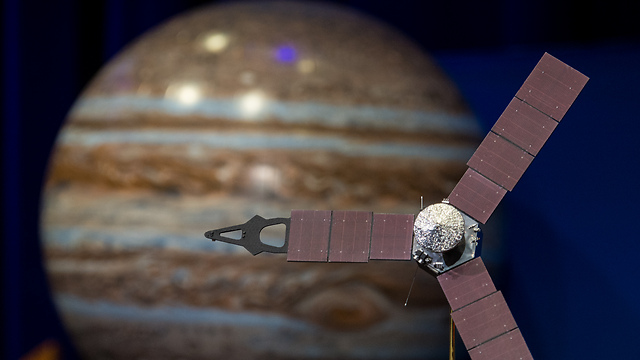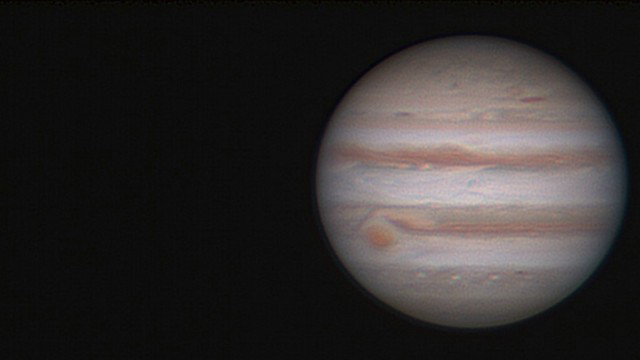Two Israeli planetary researchers played pivotal roles in NASA's new Juno space probe researching Jupiter; Dr. Kaspi, one of the Israeli scientists: 'This is the realization of a dream for me.'
Dr. Yohai Kaspi, 42, a planetary researcher at the Weizmann Institute, watched on Tuesday live the Juno spacecraft in space and was reminded of one of his happiest childhood moments in Nahariyah. “When I was 7 years old the Voyager spacecraft passed close to Jupiter and Saturn for the first time,” he explained in excitement.
"There wasn't any internet at that time, and there wasn't any way to actually see it happening. So my father bought me a NASA poster of Jupiter which I posted above my bed."
Dr. Kaspi doesn't need to look at that poster anymore. Him and another Israeli researcher, Professor Ravit Heled, 36, from Tel Aviv University, were a part of the Juno satellite project to study Jupiter.
"Being a part of this enormous project from its inception has been the realization of a dream for me," Dr. Kaspi said. "It still fascinates me."

Top: Dr. Ravit Heled Bottom: Dr. Yohai Kaspi
Hundreds of people took part in the Juno project, but only 30 of them were scientists. Drs. Kaspi and Heled were the esteemed Israeli scientific representatives on the project.
"It's a huge honor for Israel, and I really hope that this type of representation will continue in the, for the next generations," professor Heled said. "Israel definitely needs to be a part of world scientific efforts."
Dr. Kaspi added that "Israel's contribution to this project was immense. People really appreciated what we did. There was support from the Israel Space Agency, as well as another European agency which deals with Pluto. We also got help from the Jerusalem based Accubeat."

Artist's visualization of the Juno probe in orbit around Jupiter (Photo: NASA)
Dr. Kaspi is currently in Pasadena, California with his colleague Dr. Eli Galanti from the Weizmann Institute. There, at the Nasa visitors center, they were witness to the pinnacle moment of the project – when Juno went into orbit around Jupiter.
"I was at the center the whole night," Dr. Kaspi explained. "Everyone was really emotional. After over ten years of work, the satellite was travelling at about 200 thousand kilometers an hour as it became the satellite to make the closest pass of Jupiter ever, and then went into an elliptical orbit around the gas giant."
Professor Heled wasn't able to make it to California as she is expecting to give birth soon, but was talking to her team the entire time via Skype. The professor is a planetary researcher who was working from Switzerland, and was taking in the project's achievements from afar.
"It's really exciting," she said. "It’s an excitement felt all over the world, not just amongst scientists."

A live picture of Jupiter (Photo: Dr. Yigal Fatel)
Yet the work for the Israeli scientists isn't over now that Juno is in orbit around Jupiter. In fact, it's only just begun. Scientists will now try and extract as much data and information on the gas giant as they can, and try to learn how the planet – and other gas giants like it in the solar system – are formed.
"I'll be looking into the internal structure of the planet," Professor Heled said. "I'll be trying to see what exactly the planet is made out of, and also calculate its density. By figuring out what the planet is made out of, we'll be able to understand how Jupiter formed, and better understand how gas giants in general form."
Meanwhile, Dr. Kaspi is the lead scientist on a team which will research how the gas comprising Jupiter moves around on the planet. "Just like how were have weather phenomenon in the atmosphere here on earth – atmospheric flows – on Jupiter. By understanding how these atmospheric flows on Jupiter work, we will be able to better understand how they work here on earth, and on other gas giants in the solar system. Jupiter is the largest planet in the solar system and was the first planet to form after the sun. Understanding Jupiter will help us to understand the rest of the planets and their formation."
